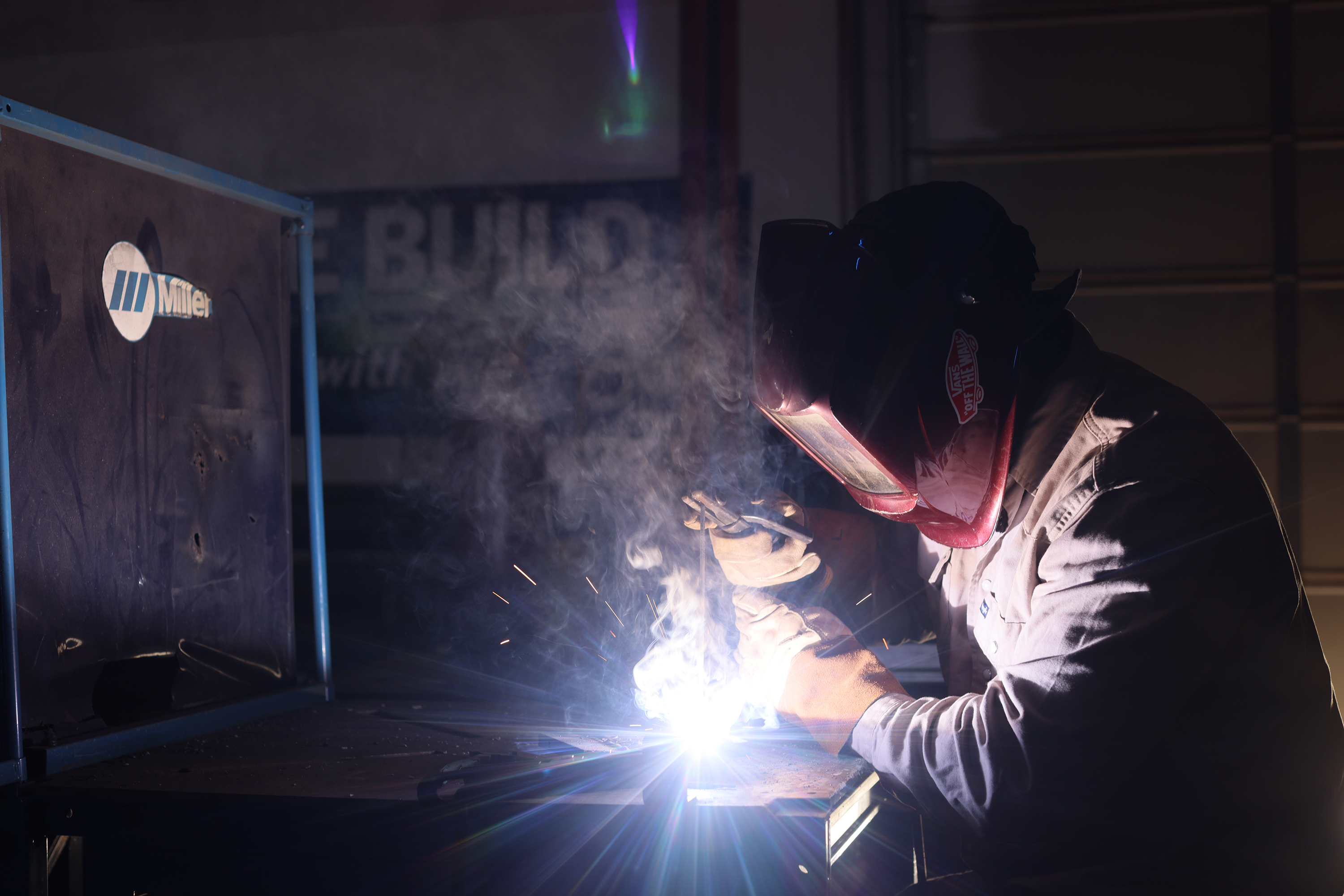Overview
Welding is a highly skilled trade, and there is a significant demand for welders in
many industries, including manufacturing, construction, and automotive. As infrastructure
continues to expand, so does the need for skilled welders to build and repair bridges,
buildings, pipelines, and other structures.
Welding is both an art and a science regarding creativity and problem-solving skills.
Welders must be able to read blueprints and plans, interpret technical drawings, and
use their creativity to design and build structures. Welders can work in a variety
of settings and industries, including construction, manufacturing, and repair.
Weatherford College's Welding Technology program provides knowledge, skills , and training in SMAW (Stick), Mig, and Tig processes, including oxy/fuel and plasma cutting in support of industry certification through American Welding Society.
Career Opportunities
Students will gain knowledge, skills, and hands on-training/experience for a career
in welding. Students will be prepared to enter the workforce as a welder.
The field of welding is currently experiencing a shortage of skilled workers, which
has created a high demand for welders. Career opportunities include in-demand positions
as a Welder, Fabricator, Welding Inspector, Welding Engineer, Sales Representative,
and/or Certified Welding Instructor.
Welding is used in the manufacturing of more than 50% of all products in the United
States, including construction, manufacturing, and transportation. According to the
Bureau of Labor and Statistics, employment of welders, cutters, solderers, and brazers
is expected to grow 3% from 2020 to 2030.
Although a 4-year degree is not needed for employment as a welder, students who choose
to pursue a 4-year degree in a related field, such as engineering, industrial technology,
or mechatronics expand their career opportunities opportunities and advance to higher-level
positions.
Our Workforce Welding program has 100% employable rate by the time students complete their program of study at the the time of this statement (April 2023). Currently, there are are approximately 60 welding positions available in Parker County alone.
Requirements
- Student must be able to stand for prolonged periods of time, climb ladders and be able to lift up to 25 lbs
- If under 18, Minor Consent Form is required and must be completed and then uploaded with the application
- Students have attained the age of 18-years prior to entering into an internship
- Students will be required to purchase and bring to class the items on the supply list
- Safety Glasses
- Leather Safety Boots
- Leather Welding Gloves
- Welding Helmet - Auto tint with adjustable shade range 4/9 - 13 preferred
- Heavy Material pants
- Long Sleeve Shirt
- Long Sleeve Jacket
- Respirator (for those who have problematic respiratory challenges as asthma)
- Hand-Held Angle Grinder
- Chipping Hammer
- Welding Pliers
Required Textbooks
Modern Welding (13th Edition). Wiliam A. Bowditch, Kevin E. Bowditch & Mark A. Bowditch. (2023). G-W Publishers. ISBN #978-1-68584-571-1
Welding Print Reading (8th Edition). John R. Walker & W. Richard Polanin. G-W Publishers. ISBN #978-1-68584-572-8
Required Textbooks that need to be purchased through Hobart Institute of Welding Technology
Welding Procedures and Qualifications, Item #EW-512-3
Welding Discontinuities and Defects, Item #EW-512-4
Destructive Testing Methods, Item #EW-512-5
Nondestructive Testing Methods, Item #EW-512-6
Faculty
